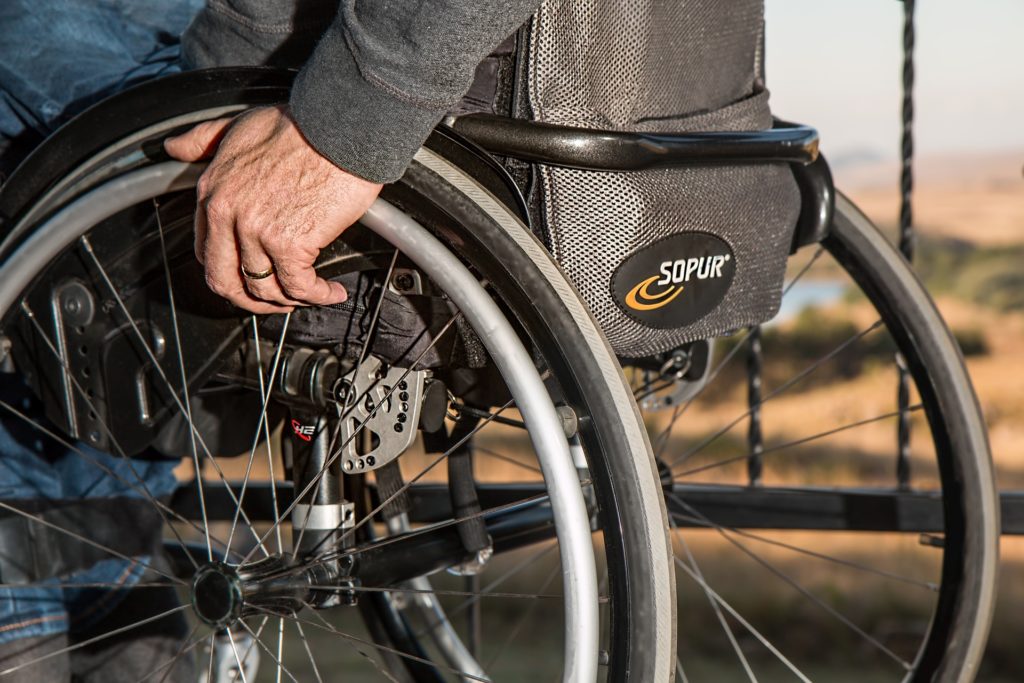
Aging and disabilities
Nearly half of adults over the age of 60 live with a disability worldwide, according to the United Nations Department of Economic and Social Affairs. In the United States, about 1 in 4 people live with a disability, with mobility impairments being the most common, according to the Centers for Disease Control and Prevention.
For National Disability Awareness Month, we’re discussing aging and disabilities, which tend to develop due to accumulating health risks across the lifespan.
The CDC defines a disability as any physical or mental condition that impacts a person’s ability to do certain activities or interact with the world around them. Disabilities commonly impact vision, hearing, mobility, cognition, self-care and the ability to form social relationships.
As disabilities increase, they can result in older adults having more difficulty living independently, in addition to barriers such as housing affordability, healthcare access and home design. However, a study from AARP found that most older adults wish to stay in their current home as they grow older, a concept known as “aging in place.”
With a few adjustments, older adults can adapt their current way of life to continue living in their homes into older age.
Planning to age in place
Adults hoping to age in place while also living with a disability should first start by considering the type of care and assistance they will need as they age. This planning may include talking with trusted family, friends or neighbors on a plan for care, such as having contacts nearby to help with personal care or finding a trained aide to assist with daily activities.
Additionally, assistive technologies can be used by older adults living with disabilities to maintain some of their independence while aging in place. According to the World Health Organization, assistive technology can be any system, service or device that allows a person to maintain their independence.
Assistive technology can range from well-known tools, like a manual wheelchair for mobility issues, to more technologically advanced devices, such as screen readers for those who have a hard time seeing the screen of their computer.
Newer technologies in development address prior health and safety concerns for people with disabilities. The VA developed “On the Move Pads,” which are cushioned wraps that reduce pressure injury risk in areas of the body that often rest on surfaces like a wheelchair seat or armrest. Other inventions include a smart cane developed for people with visual impairments. The smart cane is like the white cane used globally by many with visual impairments, though it includes advancements such as LIDAR and ultrasound sensors that can detect objects and help a visually impaired person adjust their path.
More advanced assistive technologies that are being studied include assistive robots that can increase the sense of human connection for older adults or lead exercises to help physical well-being.
Adapting to universal design
Another consideration for living with a disability is the universal design of an item. Universal design refers to an item that is usable by anyone regardless of their age or ability without the need to add any other specialized functions.
Universal design can be applied to numerous products, including houses. These types of houses are considered “visitable” if they meet three requirements: an entrance with no steps, doorways with 32 inches of passage space, and a bathroom on the main floor for people who use a wheelchair. Learn more about what makes a home accessible by visiting the Lifelong Homes Initiative at the Institute for the Built Environment at Colorado State University.
To start making your home more accessible today, Assistant Professor Maria Delgado of CSU’s Department of Design and Merchandising recommends choosing a room in your home that you use frequently, then making regular, small changes until the room incorporates more universal design features, such as changing doorknobs to handle levers to make it easier to open a door, integrating pullout shelves in the kitchen, or adding grab bars in a bathroom.
Learn more about Delgado’s suggestions for making your home more accessible by listening to her interview on the Center’s podcast, living healthy longer, here.
Living with a disability becomes more common as we age. Though, by planning in advance for the type of care you might need or adapting commonly used areas of your home with universal design features, it is possible to continue an independent lifestyle while living with a disability.
ABOUT THE AUTHOR
Haley Candelario is a student communication specialist who writes for CSU’s Office of the Vice President for Research and University Marketing and Communications. She holds a bachelor’s degree in journalism and media communication and is pursuing her second bachelor’s degree in music with CSU.





